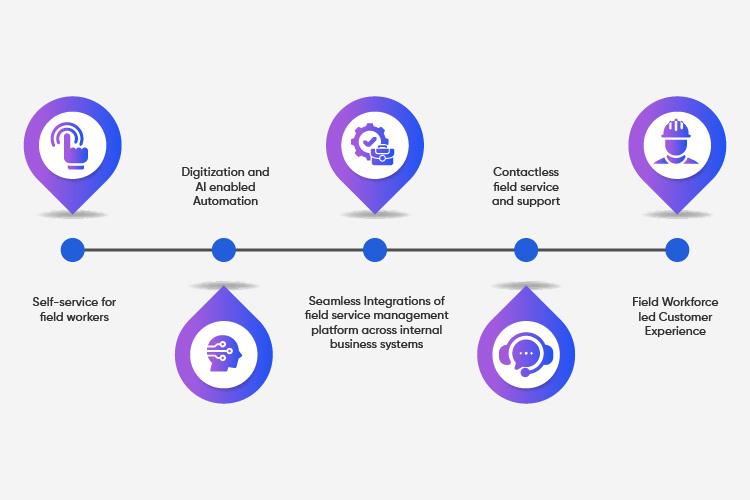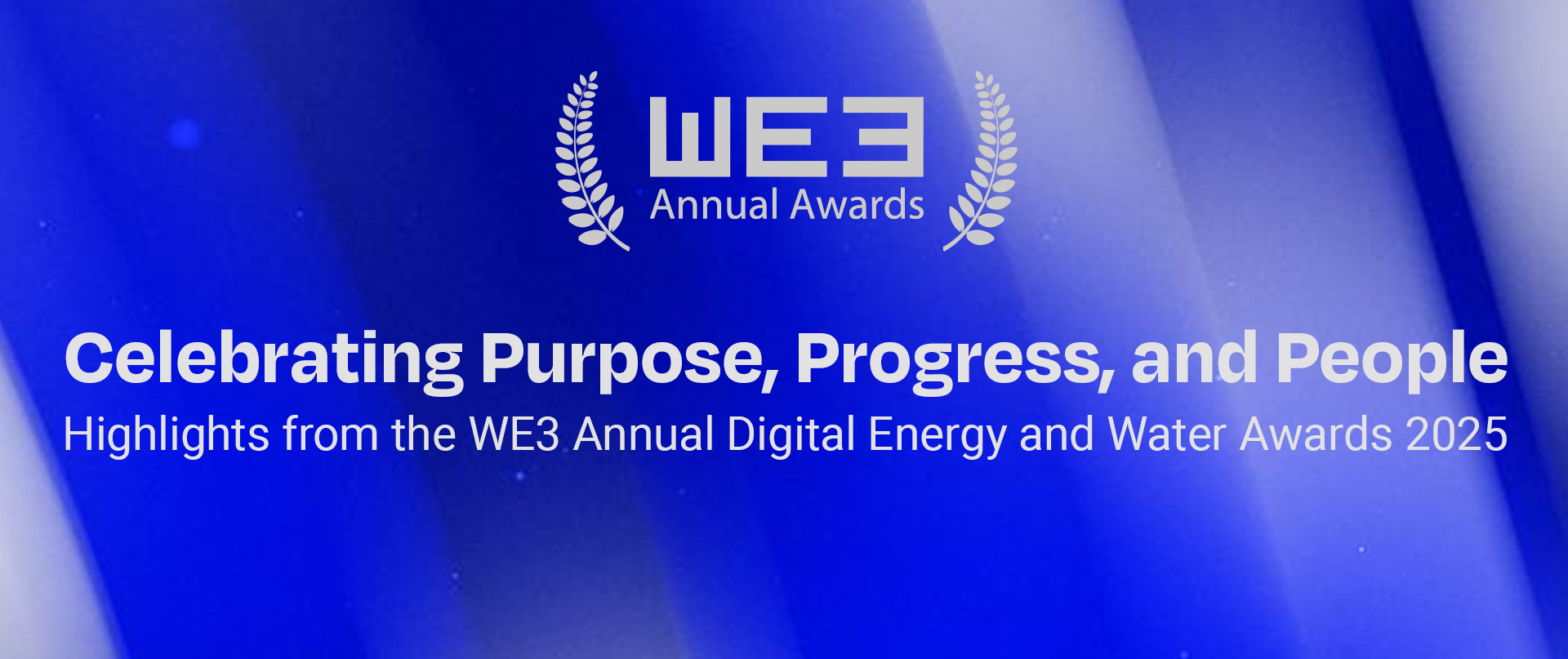Master Blog
The Power of AI / ML and Automation-Driven Platforms in Modernizing Field Workforce Management for Utilities

In this thought leadership blog, I am excited to delve into the dynamic landscape of field workforce management within the utility industry. I will explore the growing significance of integrating cutting-edge technologies like machine learning (ML), Artificial Intelligence (AI), automation, and analytics, which have now become essential for utilities to enhance operational efficiency and deliver exceptional workforce experiences.
Join me as we uncover the transformative potential of these technologies through changing trends and real-world use cases, shedding light on how they optimize field service management and elevate overall utility efficiency.
Based on my observations, I have witnessed a clear and undeniable transition within utility industry field workforce management. The need for greater field service automation–once considered a mere "good to have"—has now evolved into an essential and indispensable aspect of successful utility operations. Today, we find ourselves at a pivotal moment where the integration of emerging technologies offers an unparalleled opportunity to revolutionize the sector by modernizing the backbone of utility operations and field workforce management.
At SEW, we recognize the paramount importance of digital platforms in driving industry operations, and we are fully committed to leveraging the latest advancements in AI and automation to optimize processes including an integrated workforce experience for the utilities.
Let’s look at some of the emerging trends that are increasingly becoming a necessity for the utilities.
- Self-Service For Field Workers: Utilities are now expected to have a 360-degree view of their workforce due to the emergence of new advancements and complexities across the utility value chain. These include intricacies due to modern distributed energy resources (DERs), smart grids, demand response solutions, EVs, rooftop solar, bi-directional power flows and the rise of IOT (Internet of things). This corresponds to proactive grid maintenance, easy flow of data across systems, adhering to evolving regulatory requirements and safety for the field crew. Further, as experienced workers retire, there arises a crucial need to train and upskill a new workforce to bridge the knowledge gap. Self-service platforms serve as the first point of contact for the field worker, capturing crucial details about work orders, training needs, worker availability and location, compliance, safety, asset details, inventories and grid reliability. This information empowers field workers to anticipate and address issues efficiently. Predictive Maintenance and proactive monitoring are now a reality – thanks to modern field service management platforms. Real-time updates via software or mobile apps enable seamless communication, allowing both field workers and customers to stay in sync and manage expectations effectively.
Self-service platforms serve as the first point of contact for the field workers, capturing crucial details about work orders, training needs, their availability and location, compliance, safety, details on assets, inventories and grid reliability
- Digitization and AI Enabled Automation: Many utilities are automating various touchpoints in the field service journey through digital and technological enablers. This shift towards digitization and automation brings benefits such as real-time visibility of field crews, improved inventory and cost tracking, and an overall enhanced workforce experience. AI-powered algorithms now enable the optimization of scheduling and routing for all types of work, including urgent and emergency tasks. Thanks to mobile technology, AI, IOT and cloud-based platforms, damage assessment, instant alerts and notifications are now a reality!
- Seamless Integrations of Field Service Management Platform across internal business systems: In today’s world, it is imperative for a utility to achieve real-time visibility of field crew location and status, effectively track inventories and costs, deliver customer information when needed with optimized service delivery. Seamless integration of field service management platforms with internal business processes like enterprise asset management software leads to increased efficiency, proactive asset management, reduced manual work, elimination of human error, and enhanced overall utility operations.
AI-powered algorithms now enable the optimization of scheduling and routing for all types of work, including urgent and emergency tasks. Thanks to mobile technology, AI, IOT and cloud-based platforms, damage assessment, instant alerts and notifications are now a reality!
- Contactless Field Service and Support: The ever-evolving digital technology advancements in the 21st century has transformed customer and field interactions, leading to a shift in service standards. Many customers now prefer contactless options. To sustain contactless support, organizations must explore modern capabilities in field service management platforms, such as contactless service appointments outside the home, remote learning and training capabilities for field workers, dispatching from home, and enabling remote or hybrid work for customer service representatives. Enabling field service workers to dispatch from their homes instead of a central office minimizes time spent in traffic, resulting in faster customer service.
- Field Workforce led Customer Experience: While optimizing field workforce experience is critical to increasing efficiency and boosting productivity, it also has a direct impact on the end utility customer. Customers expect shorter wait time and a quick turnaround time from field service agents. Today’s customers also expect the field service agents to know account level information and details such as past maintenance history, installed asset data and payment history.
An automated workflow experience unlocks the power of data which in its current state is trapped across work order summaries, spreadsheets and disparate systems

By leveraging technologies such as machine learning, AI, automation, and analytics, utilities have transformed their traditional, paper-based processes into digital workflows. This transition has resulted in reduced error rates, improved compliance, and a more productive, compliant, and safer workforce leading to higher efficiency and productivity. Let's explore some of the use cases of modern field workforce management platform for utilities:
- AI Enabled Automated Field Workforce Experience: Utilities are now focusing on modernizing the workforce experience as a key aspect of delivering superior customer experience and improving grid reliability. Automation of field service transactions will help utilities track inventories, material and labour costs. Simultaneously, it ensures real time visibility across field crew location and status. An automated workflow experience unlocks the power of data which in its current state is trapped across work order summaries, spreadsheets and disparate systems. The major enablers for a modern automated field workforce experience equates to digitization, AI and ML. The application of AI technology revolutionizes the efficiency and effectiveness of managing schedules and routes, ensuring optimal allocation of resources and timely completion of critical tasks. By considering multiple variables such as location, traffic conditions, and job requirements, utilities can minimize travel time, reduce fuel costs, and improve response times, ultimately enhancing overall operational efficiency.
- Integration with Enterprise Asset Management (EAM): Today, utilities require field service management solutions that seamlessly integrate with their asset management systems. This integration allows for accurate and up-to-date information about assets, inventory, warranties, maintenance history, and specifications, facilitating smooth collaboration between back-office and field teams. When the data is synchronized between the field service work management system (WMS) and the EAM system, field technicians gain access to precise and real-time information regarding the assets they are servicing. Moreover, the integration with the EAM system empowers utilities with comprehensive inventory management capabilities, enabling efficient tracking of spare parts, tools, and consumables necessary for construction, maintenance and repair jobs.
- Connected Experience across Customers, Field Service Agents and Utility Admins: While improving the customer experience remains a priority, utilities also strive to streamline internal systems and increase operational efficiency. Due to increasing customer expectations, field service agents need access to meter data, scheduling information, location intelligence, outage data, and real-time alerts while they are in the field. The connected workforce experience results in smooth collaboration among field workers, customers and the utility admin, promoting real time visibility and quick turnaround time.
- Integrated Analytics and Data Synchronization: Utilities must prioritize the synchronization of critical data between field service management solutions, billing/payment systems, distributed energy resource management, and other internal business systems to drive operational efficiency. This seamless integration of internal systems with the field service workforce management solution enables utilities to leverage holistic analytics and convey a complete data-driven view of its business operations. By ensuring the smooth flow of data, utilities can achieve data accuracy, maximize asset uptime, and enhance the productivity of field service workers. This comprehensive approach unlocks the full potential of utilities, allowing them to make informed decisions and optimize their operations.
- Remote Asset Monitoring and Predictive Maintenance: Field workforce management solutions equipped with IoT sensors and connectivity enable utilities to remotely monitor and track the health and performance of critical assets. This enables proactive maintenance and predictive analytics to identify potential issues before they escalate, reducing downtime, optimizing asset lifespan, and minimizing costs.
- Enhanced Communication and Collaboration: Modern field workforce management platforms facilitate seamless communication and collaboration between field technicians, dispatchers, and other stakeholders. Real-time updates, instant messaging, and sharing of relevant information empower teams to work together more efficiently, resulting in quicker problem resolution and improved overall workflow.
The utility industry is undergoing a transformation in field workforce management, where the integration of AI, automation, and analytics play a crucial role. By leveraging these technologies and embracing digitization, utilities can optimize operations, improve workforce experiences, and drive greater operational efficiencies. This blog serves as a guide for utilities looking to harness the power of AI in field workforce management that will enable them to unlock their full potential and thrive in a rapidly evolving digital economy.
Smart Mobile Workforce (SMW®) is the #1 digital workforce experience (WX) platform for energy, water, gas and public works providers, worldwide. SMW® helps in intelligently managing field operations that make service experiences effortless for the end customers.






